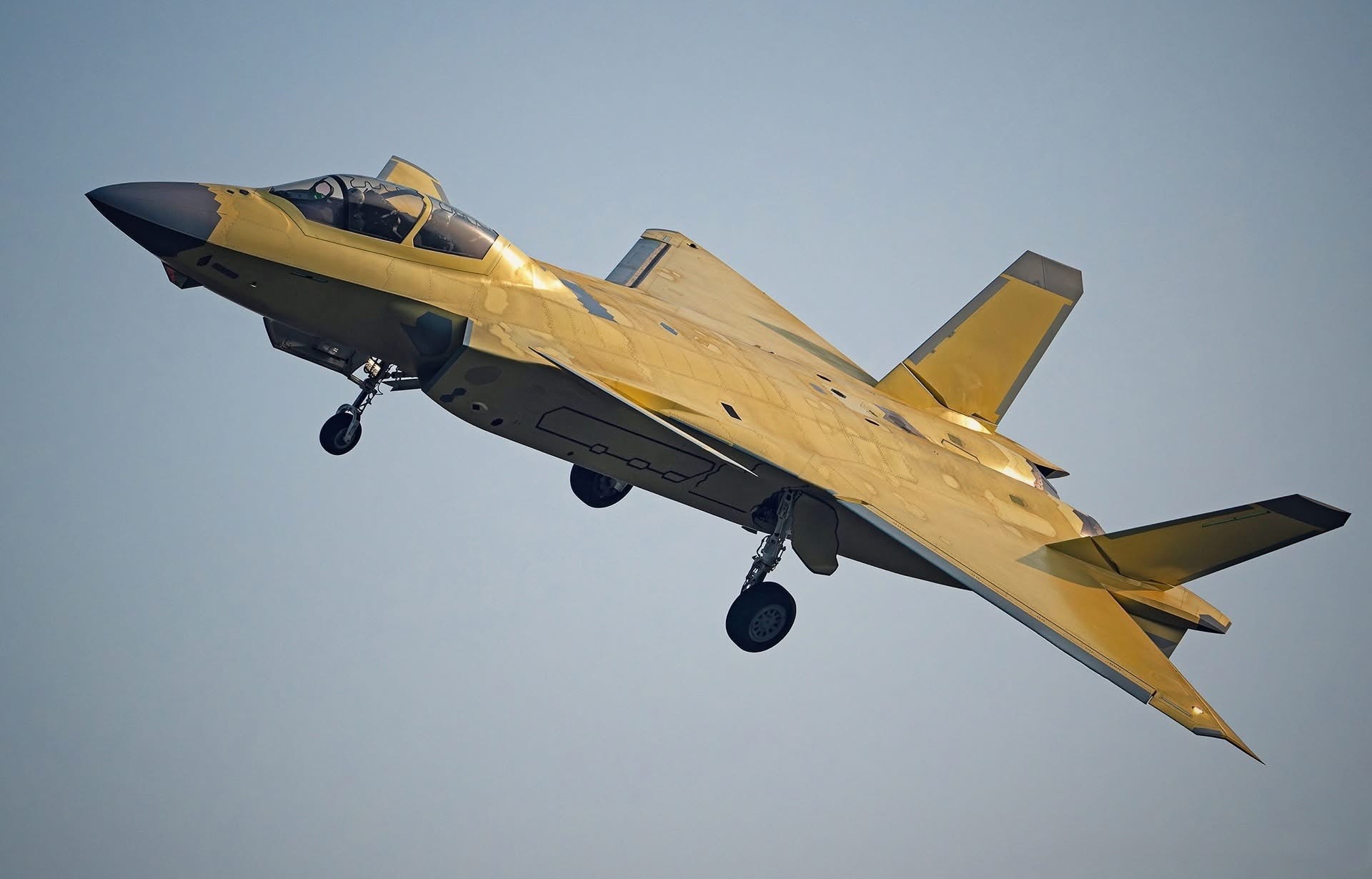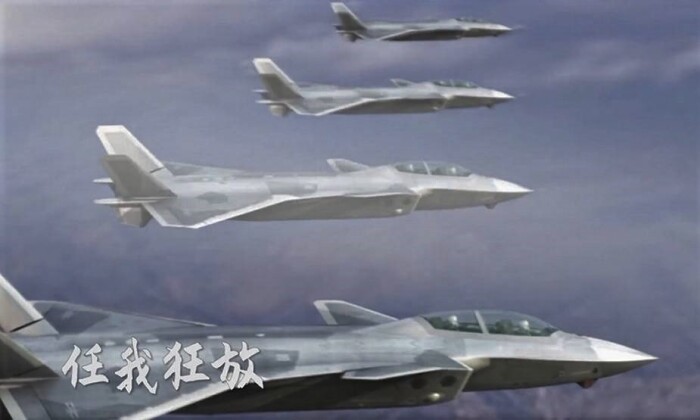Author Guest Post: Abraham Abrams
Closely coinciding with Chinese New Year’s celebrations, one of the clearest images so far seen of the elusive twin seat variant of China’s J-20 fifth generation fighter were published on the local social media outlet Weibo. The J-20S, otherwise referred to as the J-20AS, was first seen as a prototype in late October 2021, following years of reports that a twin seater was under development. The J-20 is currently the only fifth generation fighter in the world with a twin seat variant, with plans for an F-22B twin seater cancelled in 1996 as the program faced deep post-Cold War cuts, while the Soviet MiG 1.42 which was planned to have both single and twin seat variants quickly became unviable after the state disintegrated. Although Russia has pitched a twin seat variant of its Su-57 fighter for export, the aircraft’s relatively small production scale and the serious delays the program has suffered means this is unlikely to materialise until closer to 2030 if at all.

Image credit: 机外停车Rabbit on Weibo
The investment in developing a twin seat variant of the J-20 has provided important indications as to the program’s future. While the F-22B twin seat fighter was expected to serve primarily as a trainer, much like the F-15B and F-15D that preceded it, the J-20’s chief designer Yang Wei revealed on October 26, 2021, just one a day before the the fighter was first unveiled that a twin seater “would not be a trainer aircraft, because it would be developed for the enhancement of the aircraft.” Indeed, the release of artwork by the Aviation Industry Corporation of China in January 2021 showing twin seaters flying in formation in their own unit, rather than alongside single seaters, provided an early indication of this.
Although higher levels of automation have reduced the perceived need for second seats, and allow a single pilot to absorb the workload of flying while operating complex weaponry without allocating the latter job to a weapons systems officer, the second seat on the J-20S is expected to allow it to more effectively operate in capacities beyond those of a traditional fighter. In August 2022 the Ordnance Industry Science Technology military magazine observed to this effect that a twin seat variant would form an ideal basis for allowing the J-20 to fulfil a very broad range of roles including airborne early warning and control, electronic warfare, reconnaissance and command and control of unmanned aircraft. “In recent years, experts’ views on the position of fifth generation aircraft in information warfare have changed, as the aircraft can perform more duties than in the past,” it noted.
The development of a twin seat variant of the J-20 is likely to come to be considered a particularly forward thinking decision as the era where fighters will operate with unmanned semi-autonomous ‘wingmen’ under their control looms. The J-20 and the F-35 expected to lead the way in integrating with unmanned jets that offer support in roles ranging from serving as decoys, to carrying additional ordinance and launching electronic attacks. The state of China’s drone industry, and the rapid rate at which it had been able to bring new generations of cutting edge unmanned aircraft into service, could allow such pairings to have a particularly transformative impact on J-20’s combat potential, with unmanned jets such as the Dark Sword appearing to benefit from high flight performances and advanced stealth capabilities which could effectively complement manned fighters.

There remains a significantly possibility that emerging technologies will lead the PLAAF to strongly favour the J-20S over single seat variants for their greater potential to provide command and control to unmanned fleets, leading twin seaters to replace single seaters in production. Such a development would be far from unprecedented, and could mirror how the J-20’s direct predecessor the J-11B fourth generation fighter saw single seaters phased out of production in 2018, with an enhanced derivative of the same design, the J-16, replaing it on production lines and being built only as a twin seater. With the unveiling of China’s first sixth generation fighters in flight testing in December 2024 having brought the future of the J-20 program into question, it is possible that after the aircraft is surpassed in the role of a traditional fighter by a sixth generation successor, the J-20S variant may continue to be seen as a cost effective drone controller and continue to be procured for this purpose.

Order your copy here.

